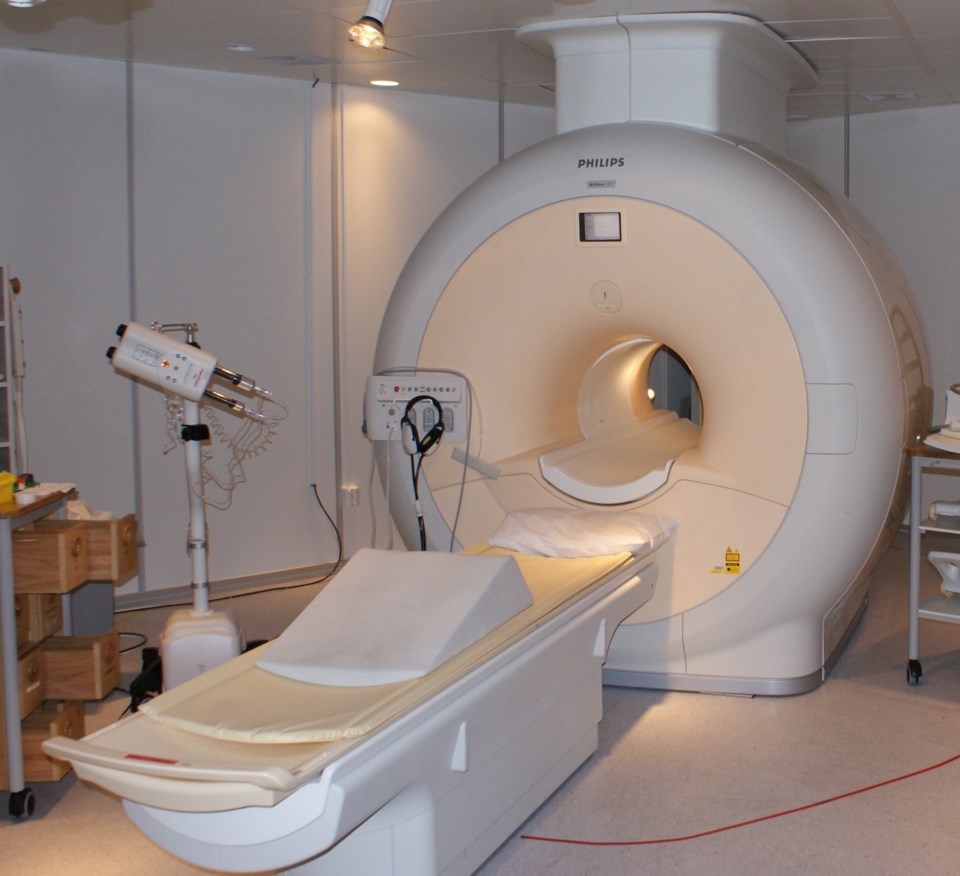The Saskatchewan government is patting itself on the back for its innovative solution to the magnetic resonance imaging (MRI) wait list problem. In a nutshell, they’re trying to create a two-for-one system in which people who choose to pay for an MRI scan at a private clinic will also be paying for a scan for someone on the public wait list.
“Regulations to support the administration and operation of user-pay MRI services in Saskatchewan must still be developed,” said Health Minister Dustin Duncan in a media scrum. “This will include a framework for private vendors to set their own private pay rates to ensure the second scan is provided at no cost to the patient on the public wait list.”
Basically, the Health Ministry is saying that people are already choosing to go out of province or out of the country to pay for private MRI scans. In the meantime, people without the financial means are languishing on a public wait list for longer than the recommended provincial wait period.
To offset this, the health system is opening up a new option whereby private clinics can choose to develop a model for Saskatchewan residents to pay for a private scan in the province. The model will be designed so that the cost of the scan will be similar to the cost of traveling out of province for a scan, including things like accommodation, travel, and food.
For example, a person might pay $800 for a scan in Alberta and an extra $500 for travel and accommodation, thus bringing the total to $1,300 (and that’s on the cheap end). With this new legislation, private companies in the province can create a model that would charge a patient $1,300 or less for a scan. So instead of that extra $500 being spent out of province and benefiting no one, it would go towards a second scan for a patient on the wait list.
“We will be going through how we will track to ensure that the private company isn’t sneaking people through the back door so that they don’t have to do our public scan,” said Duncan. “Where we’re leaning right now is that there will be a reporting or auditing process from the companies so that we can ensure that we are getting our public scan for every private scan.”
The government won’t be forcing any companies to participate in this new legislation, so it will only apply to those who choose to provide this option. If they then attempt to cheat the system, there will be a penalty.
In fairness to the private companies that choose to do this, the government will be developing a framework that ensures that companies aren’t getting ripped off.
“We want to ensure that there’s fairness for (the companies) as well, so if they’re doing fairly easy or simple scans, we don’t want to be sending over the patients with the most complicated scans,” said Duncan. “We’ll match up patients from the public list to similar types of scans that people are paying for.”
According to Duncan, the number of patients receiving publicly funded MRI scans in the last seven years has increased from 15,700 a year to 33,000 last year. Capacity and capability has grown, but so has doctor demand, meaning that patients are still waiting longer than what’s recommended. This option is a potential solution because it diverts private dollars to better use. It will be implemented for a year on a trial basis and then re-evaluated at the end of the year. Currently, there are only two locations in Regina in the private system that have MRI capabilities.
“We will want to see after a year what impact if any this will have on the public system,” said Duncan. “Right now, we’re in a position where we know the option we want to pursue. The legislation will indicate to the public our intention and allow for debate.”




